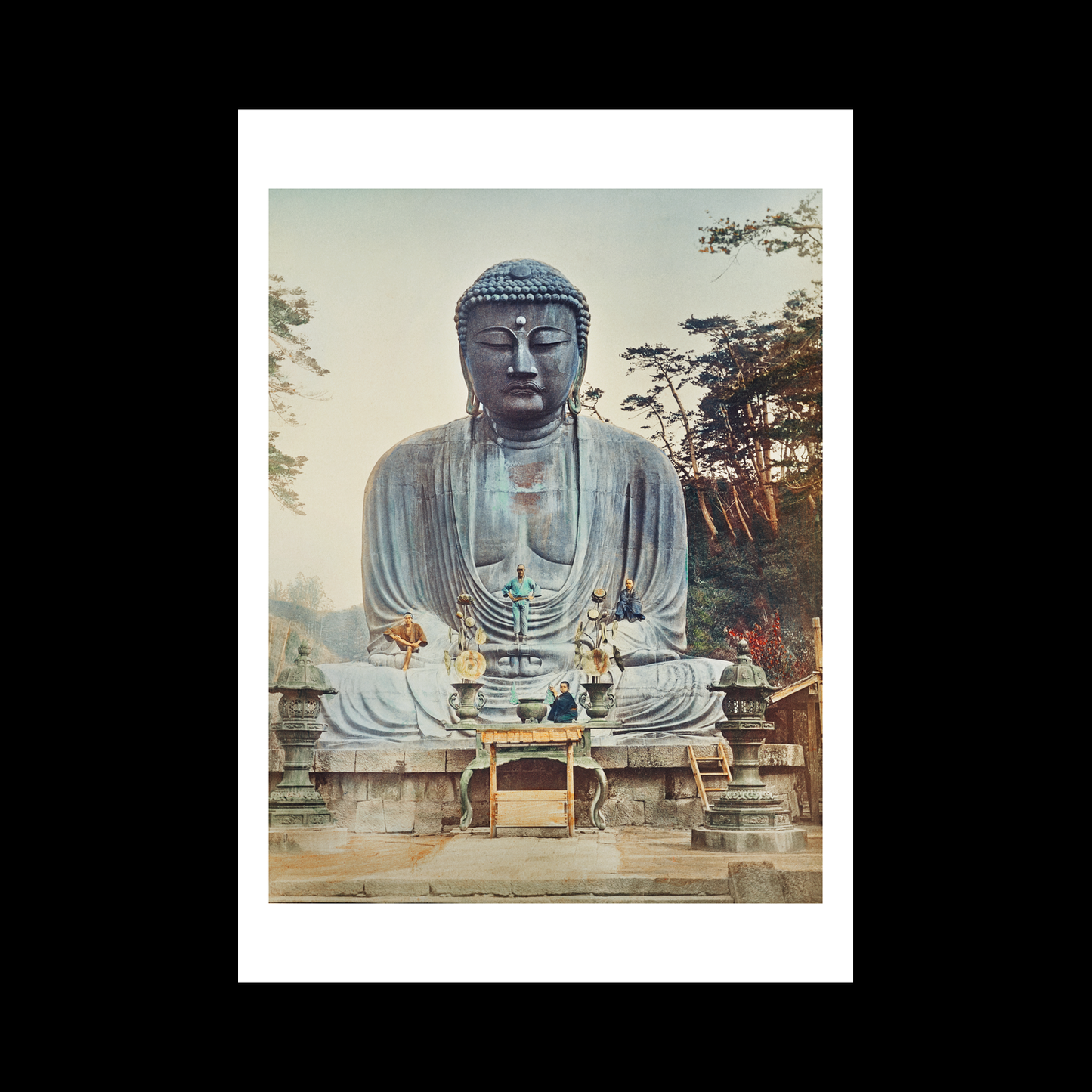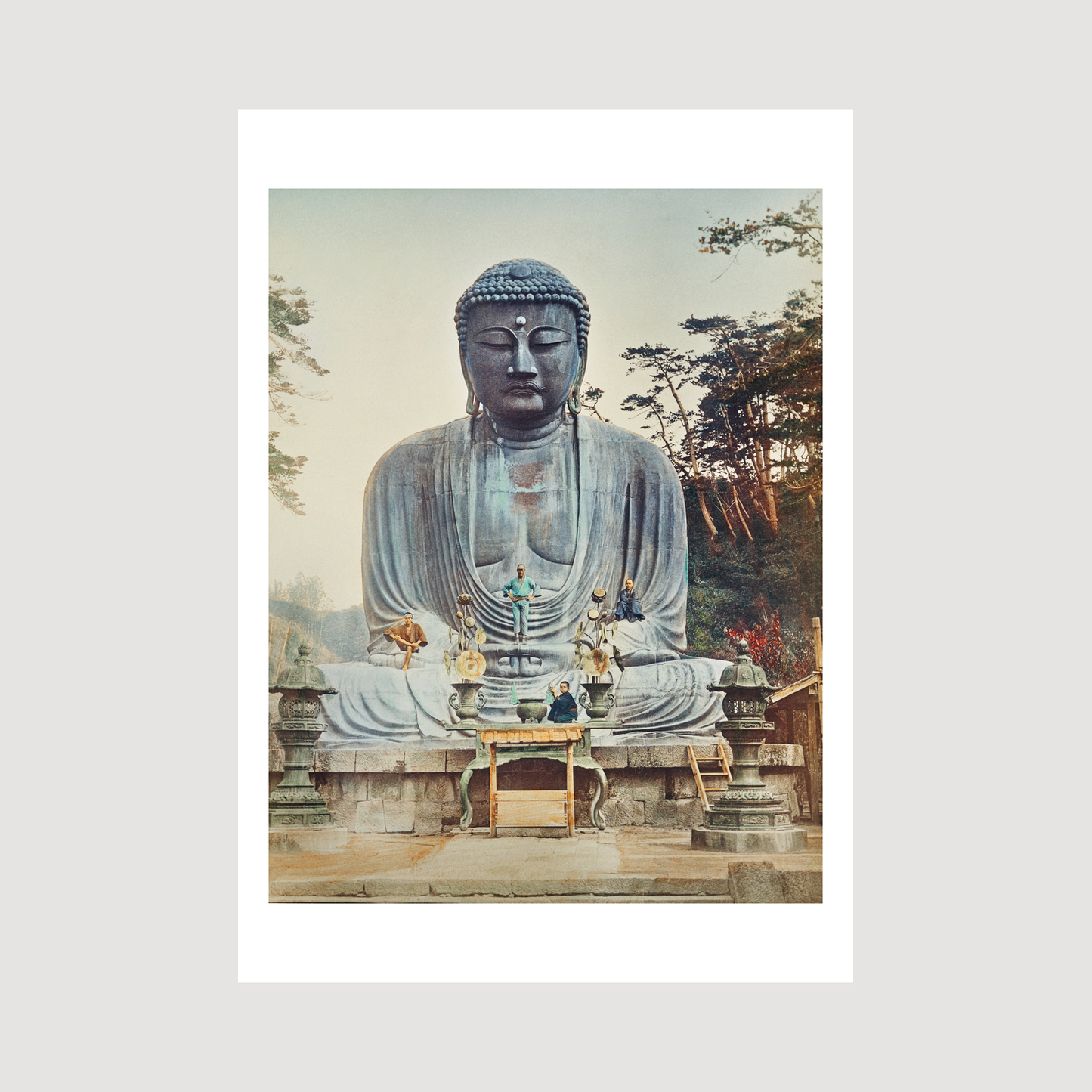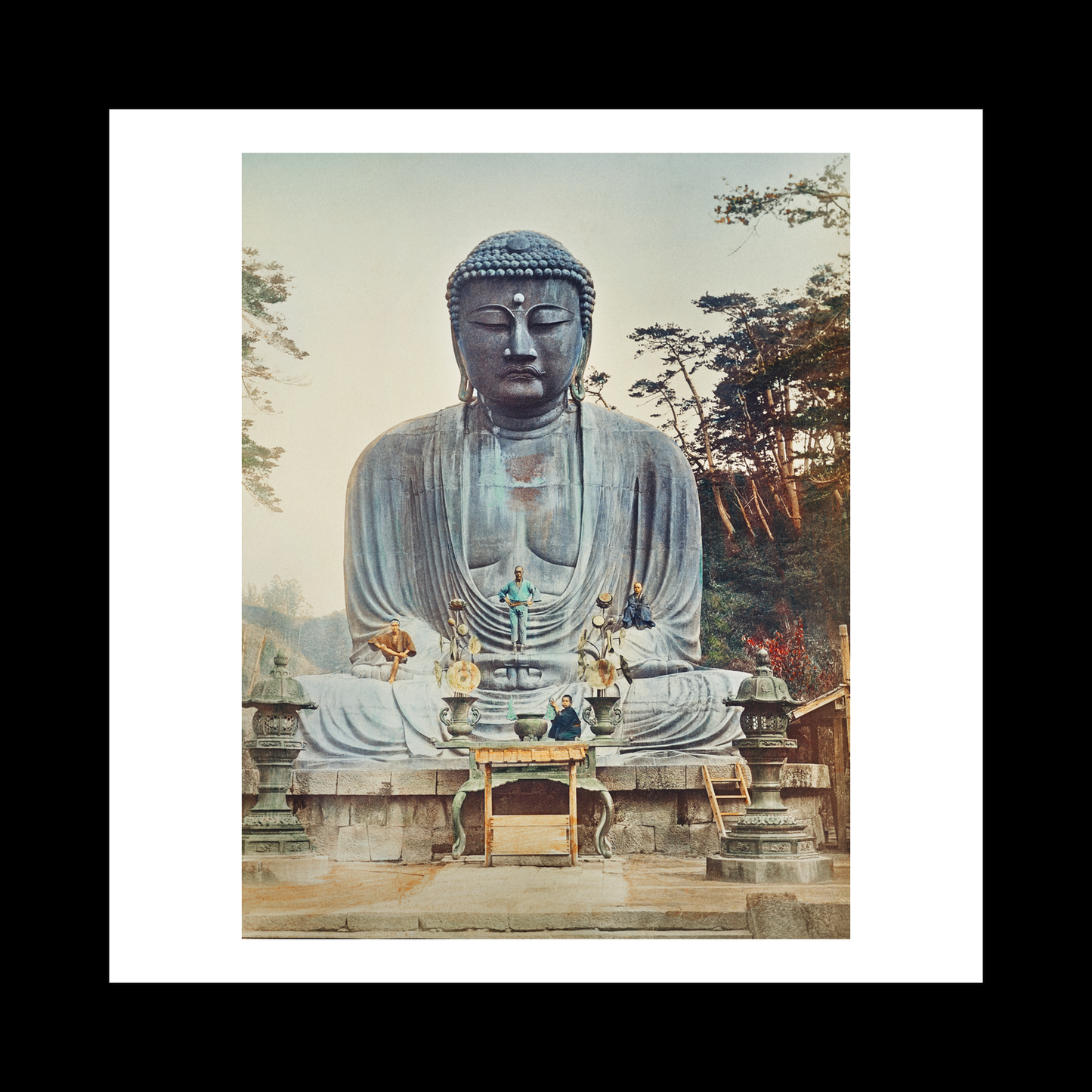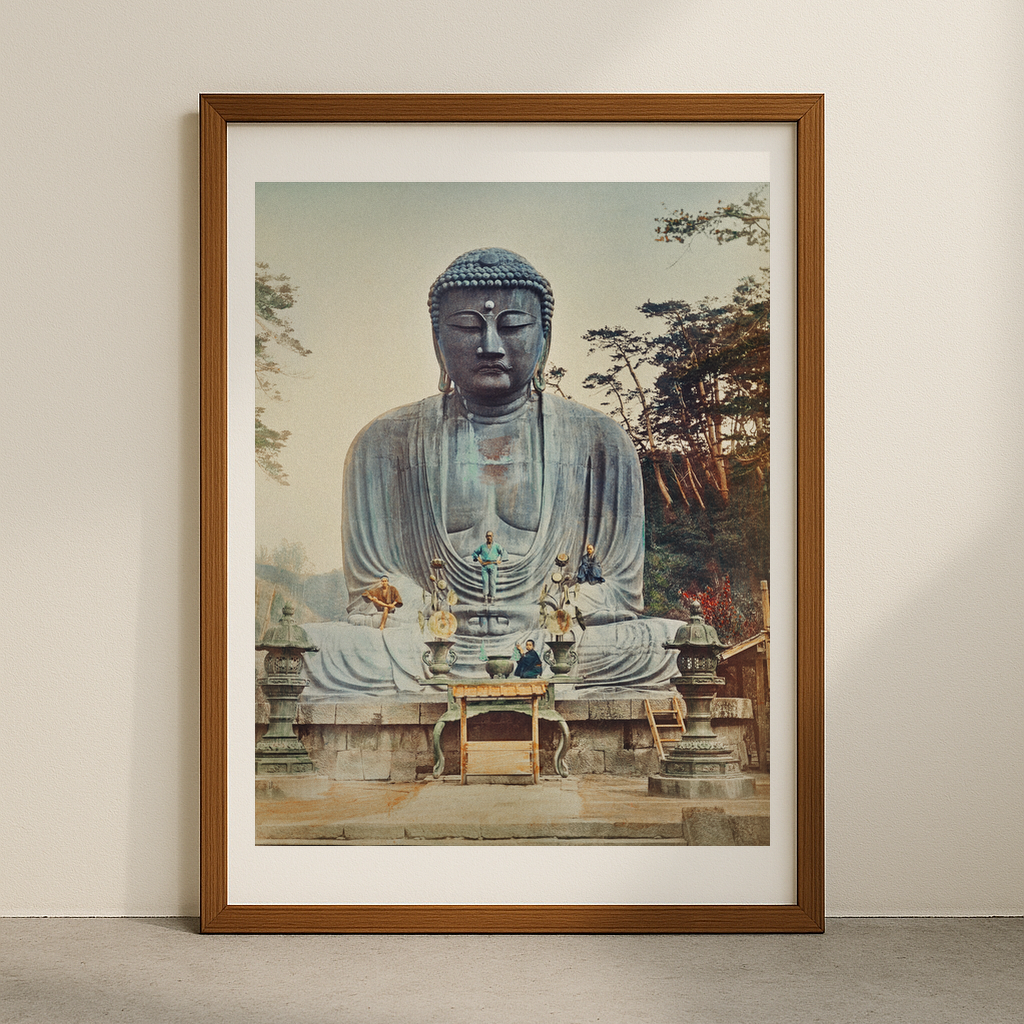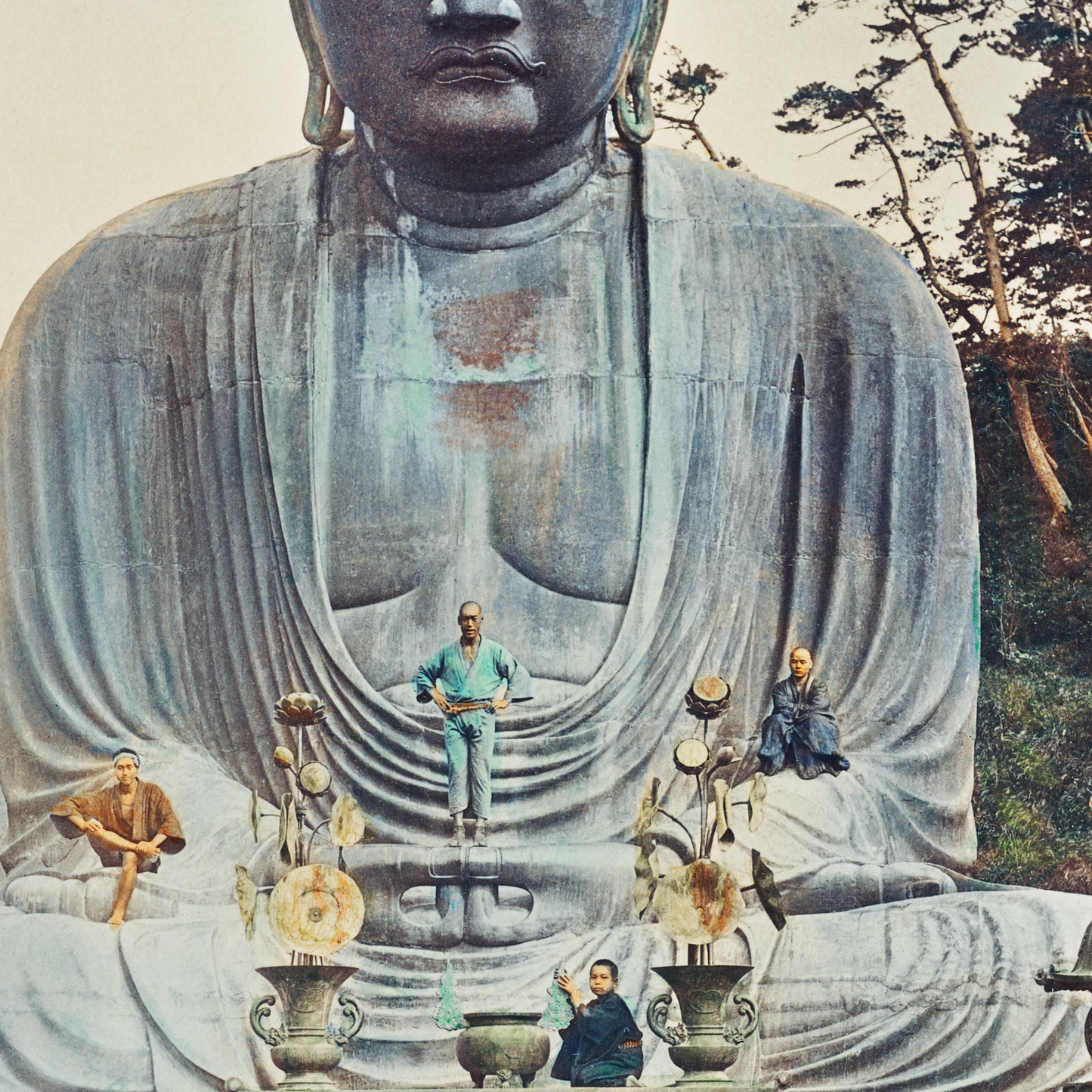1
/
of
6
Bronze Buddha Kamakura, hand–colored albumen
Bronze Buddha Kamakura, hand–colored albumen
Regular price
£12.45 GBP
Regular price
Sale price
£12.45 GBP
Taxes included.
Quantity
Couldn't load pickup availability
Kazumasa Ogawa's 1897 hand-coloured albumen print of the Great Buddha of Kamakura stands as a remarkable example of early Japanese photography, blending traditional artistic sensibilities with emerging photographic techniques. The careful hand-colouring breathes life into the monumental bronze statue, capturing the serene expression and intricate details of the meditation pose with exceptional clarity and warmth.
Ogawa, a pioneering figure in Japanese photography, was among the first to master and teach Western photographic techniques in Japan. His choice to document the Kamakura Buddha reflects the fascinating period of cultural exchange during the Meiji era, when Japan was opening its doors to Western influence while preserving its rich cultural heritage. The albumen print process, combined with traditional Japanese hand-colouring methods, creates a unique aesthetic that bridges Eastern and Western artistic traditions.
The composition demonstrates Ogawa's technical expertise and artistic vision. The Buddha's imposing presence is captured from a slightly low angle, emphasising its spiritual significance while maintaining a sense of accessibility. The subtle application of colour enhances the bronze's patina and the surrounding environment, creating depth and dimension that black-and-white photography alone couldn't achieve. This work represents a crucial moment in Japanese photographic history, when artists like Ogawa were developing new ways to document and interpret their cultural monuments for both domestic and international audiences.
The image was part of a larger project documenting Japanese cultural treasures, reflecting the period's growing interest in preserving and sharing Japan's artistic heritage. Ogawa's approach to photography was revolutionary for its time, combining scientific precision with artistic sensitivity to create works that continue to captivate viewers well over a century later.
View full details
Ogawa, a pioneering figure in Japanese photography, was among the first to master and teach Western photographic techniques in Japan. His choice to document the Kamakura Buddha reflects the fascinating period of cultural exchange during the Meiji era, when Japan was opening its doors to Western influence while preserving its rich cultural heritage. The albumen print process, combined with traditional Japanese hand-colouring methods, creates a unique aesthetic that bridges Eastern and Western artistic traditions.
The composition demonstrates Ogawa's technical expertise and artistic vision. The Buddha's imposing presence is captured from a slightly low angle, emphasising its spiritual significance while maintaining a sense of accessibility. The subtle application of colour enhances the bronze's patina and the surrounding environment, creating depth and dimension that black-and-white photography alone couldn't achieve. This work represents a crucial moment in Japanese photographic history, when artists like Ogawa were developing new ways to document and interpret their cultural monuments for both domestic and international audiences.
The image was part of a larger project documenting Japanese cultural treasures, reflecting the period's growing interest in preserving and sharing Japan's artistic heritage. Ogawa's approach to photography was revolutionary for its time, combining scientific precision with artistic sensitivity to create works that continue to captivate viewers well over a century later.
